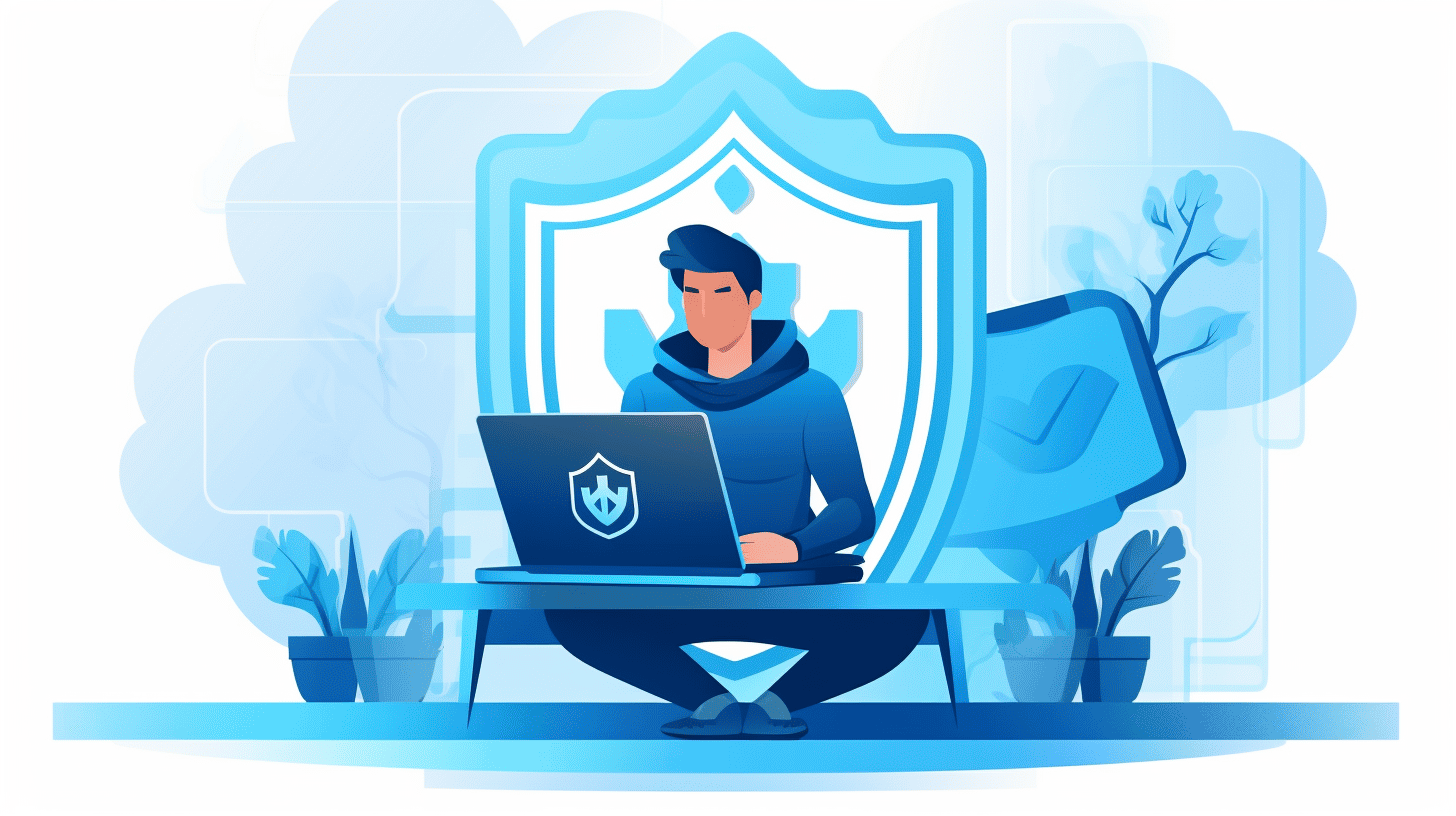在这个数字时代,拥有可靠的在线形象对于企业和个人都至关重要。无论您经营的是个人博客还是电子商务网站,确保您的 WordPress 网站始终正常运行对于保持积极的用户体验和最大程度地扩大您的影响力都至关重要。
我们都经历过网站因停机而无法访问的沮丧。这不仅会给访问者留下负面印象,还会导致收入损失和品牌声誉受损。这就是为什么采取主动措施防止停机并为意外中断做好准备至关重要。
在本文中,我们将探讨停机的概念及其影响,并为您提供维护可靠在线 WordPress 网站的实用技巧和策略。我们将涵盖从监控网站正常运行时间到实施备份系统和性能优化技术的所有内容。最后,您将全面了解如何保护网站免受停机影响并确保无缝的用户体验。
所以,让我们深入研究并拒绝停机!
了解停机时间

⏰ 什么是停机时间?
每个人都经历过这样的沮丧时刻:当他们试图访问一个网站或使用一个应用程序时,却只看到一条错误消息或一个似乎永无止境的加载屏幕。这就是所谓的 停机时间.
简单来说,停机时间是指网站、应用程序或系统不可用或无法按预期运行的任何时间段。停机时间与正常运行时间相反,正常运行时间表示网站或系统正常运行的时间。停机时间可能从几秒钟到几个小时不等,并且可能由于多种原因而发生。
🚧 停机的影响
停机可能会产生深远的影响,不仅会影响依赖在线业务的企业和组织,还会影响依赖这些服务的最终用户。让我们仔细看看停机的一些主要影响:
- 收入损失: 对于电子商务网站来说,每分钟的停机时间都可能导致销售和收入损失。根据 Statista 的一项研究,网站停机平均每分钟会给企业造成 $5,600 的损失。这可不是小数目!
- 声誉损害: 无论是小型博客还是跨国公司,长时间的宕机都会严重损害品牌声誉。客户可能会对公司提供可靠服务的能力失去信任,从而导致客户和潜在商机的流失。
- 客户不满意: 想象一下,当您急需付款时,在停机期间尝试访问网上银行平台。真是令人沮丧!停机会让客户感到烦恼、不便,并且更有可能寻找替代方案。
- 生产力下降: 停机不仅会影响外部用户,还会影响内部运营。如果公司的内部系统发生停机,员工可能无法访问关键数据,从而导致生产力下降和重要任务的完成延迟。
- SEO影响: 像 Google 这样的搜索引擎在对搜索结果进行排名时会考虑网站的可用性。如果您的网站经常出现宕机,其搜索引擎排名可能会受到影响,从而使潜在客户更难找到您。
显然,停机时间是企业和个人都十分关心的问题。好消息是,可以采取一些措施来最大限度地减少停机时间的影响并确保顺畅的用户体验。在下一节中,我们将探讨一些减少停机时间和最大限度延长正常运行时间的策略。
如何检查你的 WordPress 网站的正常运行时间
在运行 WordPress 网站时,需要考虑的关键因素之一是正常运行时间。简而言之,正常运行时间是指您的网站可供访问者访问的时间。确保您的 WordPress 网站具有较高的正常运行时间对于保持积极的用户体验和最大限度地发挥您网站的潜力至关重要。在本文中,我们将探讨一些有效的方法来检查您的 WordPress 网站的正常运行时间,以便您可以随时掌握网站的性能。
监控工具
要监控 WordPress 网站的正常运行时间,您可以利用各种提供实时数据和通知的监控工具。这些工具会不断检查您网站的可用性,并提供有关正常运行时间和响应时间的统计数据。以下是一些值得考虑的流行监控工具:
- UptimeRobot:UptimeRobot 是一款可靠且用户友好的监控工具,可定期检查 WordPress 网站的正常运行时间。它提供免费和付费计划,允许您同时监控多个网站。
- 平多姆:Pingdom 是另一款提供全面正常运行时间监控的流行监控工具。每当您的网站出现停机时,它都会通过电子邮件或短信提供详细的报告和警报。
- Site24x7:Site24x7 是一款强大的监控解决方案,不仅可以监控 WordPress 网站的正常运行时间,还可以提供对各种性能指标的洞察。它提供广泛的监控选项,并与 WordPress 无缝集成。
正常运行时间基准
虽然每个网站都希望达到 100% 的正常运行时间,但重要的是要了解,由于服务器维护、更新或不可预见的情况,某些停机时间是不可避免的。但是,您应该遵循行业标准基准,以确保网站可靠且可访问。以下是一些需要牢记的基准:
- 99.9% 正常运行时间:目标是让您的 WordPress 网站实现至少 99.9% 的正常运行时间。这相当于每月停机时间少于 44 分钟,这在行业标准中被认为是可以接受的。
- 停机通知:确保当您的网站出现故障时,您会收到通知。这样您就可以及时解决任何问题,并最大限度地减少对访问者的影响。
- 性能监控:除了正常运行时间监控外,还应考虑实施性能监控。这包括监控服务器响应时间、页面加载速度和其他性能指标,以确保最佳用户体验。
总之,检查 WordPress 网站的正常运行时间对于维护可靠且可访问的网站至关重要。通过利用监控工具并瞄准行业标准基准,您可以随时了解网站的正常运行时间并采取必要的措施以最大限度地减少停机时间。请记住,始终可用的网站不仅可以增强用户体验,还可以促进您的整体在线成功。
防止停机
停机对任何网站所有者来说都是一个重大挫折。它不仅会导致访问者感到沮丧,还会影响您的在线声誉并导致收入损失。幸运的是,您可以采取多种措施来防止停机并确保您的网站顺利运行。在本文中,我们将探讨一些有效的方法来保持您的网站正常运行。
选择可靠的托管服务
防止停机的最重要方面之一是选择可靠的托管服务。可靠的托管提供商可确保访问者始终可以访问您的网站。以下是选择托管服务时要考虑的一些关键因素:
- 正常运行时间保证:寻找提供高正常运行时间保证的托管服务提供商,理想情况下为 99.9% 或更高。这可确保您的网站几乎始终可供访问者使用。
- 服务器位置:选择服务器靠近目标受众的托管服务。这可以减少延迟并缩短加载时间。
- 可扩展性:考虑选择一家能够让您随着网站规模扩大而轻松扩展资源的托管服务提供商。这可确保您的网站能够处理增加的流量,而不会出现停机。
实施备份系统
建立可靠的备份系统对于防止停机至关重要。备份不仅可以在发生意外情况时保护您的数据,还可以让您在出现问题时快速恢复网站。实施备份系统时需要注意以下几点:
- 频率:定期安排备份,以确保您拥有网站数据的最新版本。根据您网站更新的频率,每日或每周备份可能比较合适。
- 异地存储:将备份存储在与网站服务器不同的位置。这样可以在服务器故障或其他灾难发生时保护您的数据。
- 测试备份:定期测试您的备份以确保其完整性和可靠性。这可让您快速识别并修复任何问题,以免造成问题。
定期 WordPress 维护
维护您的 WordPress 网站对于防止停机和确保最佳性能至关重要。定期更新和维护任务可以帮助您的网站顺利运行。以下是一些基本的维护做法:
- 更新 WordPress:保持您的 WordPress 核心、主题和插件更新,以受益于最新的安全补丁、错误修复和性能改进。
- 删除不必要的插件和主题:未使用或过时的插件和主题可能会降低您的网站速度并带来安全风险。定期审核并删除任何不必要的元素。
- 优化数据库:定期优化您的 WordPress 数据库以提高网站性能并减少停机的可能性。
使用性能优化技术
性能优化在防止停机和提供无缝用户体验方面发挥着重要作用。以下是一些优化网站性能的技巧:
- 缓存:实施缓存技术来存储网站的静态元素,减少服务器负载并提高页面加载时间。
- 图像优化:压缩和优化图像以减小文件大小,同时不影响质量。这有助于缩短页面加载时间,尤其是在移动设备上。
- 最小化:缩小 CSS、JavaScript 和 HTML 文件以减小其大小并提高网站性能。
通过实施这些预防措施,您可以最大限度地降低停机风险,并确保您的网站始终正常运行。请记住,定期维护、备份系统和选择可靠的托管服务是防止停机和提供出色用户体验的关键。
处理意外停机
没有人喜欢意外停机,但不幸的是,这是每个网站所有者在某个时候都必须处理的事情。无论是由于服务器问题、网络攻击还是简单的人为错误,停机都会令人沮丧且代价高昂。但是,通过正确的方法,您可以将影响降至最低,并让您的网站恢复正常运行。在本文中,我们将探讨一些策略,以帮助您有效地处理意外停机。
应急响应策略
当遇到意外停机时,制定应急响应策略以确保迅速有效地解决问题非常重要。您可以采取以下几个步骤:
- 识别问题:第一步是确定停机原因。检查服务器日志或联系托管服务提供商以收集有关该问题的信息。快速识别问题将有助于您更快地找到解决方案。
- 内部沟通:一旦确定了问题,请与内部团队(如果有)沟通。通过让每个人都了解情况,您可以共同努力迅速解决问题。确保每个人都了解情况以及他们在恢复过程中的各自角色。
- 获得托管 WordPress 支持:如果您拥有托管 WordPress 支持服务,那么在停机期间,它们可以成为宝贵的资源。他们可以提供专家帮助,识别和解决问题,并尽快让您的网站恢复在线。如果您没有托管 WordPress 支持服务,考虑投资一项服务可以有助于减少未来的停机时间。
停机恢复
解决导致停机的问题后,重要的是集中精力高效恢复您的网站,以最大限度地减少对用户的影响。您可以采取以下措施:
- 执行停机后审计:停机后,请花时间对网站进行全面审核。检查停机期间是否存在任何数据或功能丢失、链接损坏或可能出现的任何其他问题。及时修复任何问题,以确保无缝的用户体验。
- 与用户沟通:在停机期间让用户了解最新情况至关重要。对问题、原因以及解决问题的步骤保持透明。通过电子邮件、社交媒体或专用状态页面定期提供更新有助于建立信任并让用户了解最新情况。
- 采取预防措施:从停机中恢复后,必须采取预防措施以避免将来再次发生此类事件。这可以包括定期备份、安全审核、监控工具和冗余措施。通过采取主动措施,您可以最大限度地减少将来再次发生类似停机的可能性。
在停机期间与用户沟通
在停机期间,与用户进行有效沟通对于管理他们的期望和维持信任至关重要。以下是在停机期间与用户沟通的一些技巧:
- 提供清晰的错误消息:当用户在停机期间遇到您的网站时,他们应该看到一条清晰的错误消息来解释情况。这将帮助他们了解问题是暂时的,并向他们保证您正在努力解决它。
- 利用社交媒体:利用社交媒体平台及时向用户提供最新信息。定期发布有关解决停机问题的进展、预计恢复时间以及任何其他相关信息的最新信息。与用户互动并及时回复他们的疑问或担忧。
- 设置专用状态页面:考虑设置一个专门的状态页面,提供停机情况的实时更新。该页面可以作为用户获取停机最新信息及其解决进度的中央枢纽。
总之,意外停机可能具有挑战性,但通过明确的应急响应策略、有效的恢复措施以及与用户的主动沟通,您可以最大限度地减少影响并确保网站访问者获得无缝体验。请记住聘请托管 WordPress 支持服务以获得专家帮助,并考虑实施预防措施以减少未来的停机时间。
投资停机保护服务
不要让停机时间影响您的业务!立即投资停机保护服务!
在当今快节奏的数字世界中,企业严重依赖技术来高效运作。然而,技术并非万无一失,停机可能在你最意想不到的时候发生。无论是由于硬件故障、自然灾害还是网络攻击,任何停机时间都可能导致收入损失、声誉受损和客户失望。这就是为什么投资停机保护服务不仅是一种奢侈,而且是一种必需品!
停机成本:不仅仅是财务成本
停机可能会对您的业务造成严重后果,其影响远远超出直接的财务损失。以下是停机可能对您的组织造成影响的一些方式:
- 收入损失: 当您的系统发生故障时,您就无法为客户提供服务或处理交易。这直接导致销售和收入损失。
- 生产力下降: 员工无法完成任务并为公司的发展做出贡献,导致生产力下降。
- 声誉受损: 客户希望企业能够全天候提供服务,一旦遇到宕机,他们就会很快失去信任。声誉受损很难恢复。
- 客户流失: 遭遇停机的不满意客户更有可能将业务转移到其他地方,从而导致客户流失。
停机保护服务的好处
投资停机保护服务可带来诸多好处,有助于保护您的业务免受潜在的停机风险。以下是您应该考虑进行此项投资的一些原因:
- 最大限度地减少收入损失: 停机成本可能很高,但通过实施停机保护服务,您可以确保快速恢复并最大限度缩短停机时间,从而最大限度地减少财务影响。
- 确保业务连续性: 停机保护服务提供强大的备份和灾难恢复解决方案,确保您的关键数据和系统的安全,并能在发生事故时快速恢复。
- 提高客户满意度: 通过投资停机保护服务,您可以展示为客户提供不间断服务的承诺。这可以显著提高客户满意度和忠诚度。
- 提高生产力: 通过停机保护服务,您可以减少停机事件并让您的员工专注于工作,从而提高工作效率。
- 保持竞争优势: 在当今竞争激烈、客户期望很高的环境下,投资停机保护服务可为您的企业带来战略优势,超越那些尚未优先考虑停机预防和恢复的竞争对手。
选择正确的停机保护服务
为您的企业选择停机保护服务时,请牢记以下因素:
- 可靠性: 寻找在停机预防和恢复方面拥有良好记录的服务提供商。阅读客户评论,评估提供商的声誉,并确保他们的解决方案满足您的业务需求。
- 可扩展性: 您的停机保护服务应足够灵活,能够随着您的业务发展而发展。随着您的业务扩展,解决方案应能轻松适应增加的工作负载和不断发展的技术环境。
- 兼容性: 确保停机保护服务与您现有的系统和软件无缝集成。这可减少实施过程中的中断并确保您的员工顺利过渡。
投资停机保护服务是对您企业未来的投资。通过主动降低停机风险,您可以确保不间断运营,保护您的财务状况,并在市场上保持良好的声誉。
所以,不要让停机影响您的业务!立即采取行动,投资停机保护服务,以保护您的业务免受意外影响。您的客户、员工和利润都会感谢您!
结论
总之,维护可靠且持续在线的 WordPress 网站对于您的数字形象的成功至关重要。停机可能会对您网站的性能、用户体验甚至您的声誉产生重大影响。通过了解停机的概念、定期监控网站的正常运行时间、实施预防措施以及制定明确的应急响应策略,您可以最大限度地减少意外停机的影响。
投资停机保护服务(例如 Managed-WP 等可靠的托管服务)可以让您高枕无忧,因为您知道您的网站处于安全状态。Managed-WP 是一个高级托管 WordPress 云托管平台,提供专家级 24/7/365 WordPress 支持、备份管理、补丁管理和主动监控。借助 Managed-WP,您可以简化基础架构,在数字工作中体验自由,并确保 WordPress 网站的不间断可用性。
不要让停机时间阻碍您的在线成功。采取主动措施来有效预防和处理停机时间。相信 Managed-WP 等可靠的托管服务可以为您提供必要的工具和支持,以维护持续在线的 WordPress 网站。立即开始您的旅程,实现更可靠的在线状态。
常见问题
- 什么是网站停机时间?
网站停机是指网站无法访问或无法供访问者使用的一段时间。它可能由服务器问题、维护或网络问题等各种因素造成。
- 网站频繁宕机可能带来哪些后果?
网站频繁停机会导致糟糕的用户体验、流量损失、搜索引擎排名下降,并最终导致您的在线业务收入和声誉损失。
- 如何最大限度地减少我的 WordPress 网站的停机时间?
为了最大限度地减少网站停机时间,请确保选择可靠的托管服务提供商,定期更新 WordPress 核心、主题和插件,监控网站性能和正常运行时间,使用内容分发网络 (CDN),并制定备份和灾难恢复计划。
- 是否有任何 WordPress 插件可以帮助防止停机?
是的,有 Jetpack、UpdraftPlus 和 WP Rocket 等插件可以通过提供网站监控、自动备份和性能优化等功能来帮助防止停机。
- 如果尽管采取了预防措施,我的 WordPress 网站仍然频繁宕机,我该怎么办?
如果您的 WordPress 网站仍然频繁停机,请考虑升级您的托管计划、优化您网站的代码和脚本、检查插件是否存在冲突,并寻求经验丰富的 WordPress 开发人员或支持团队的帮助。



















